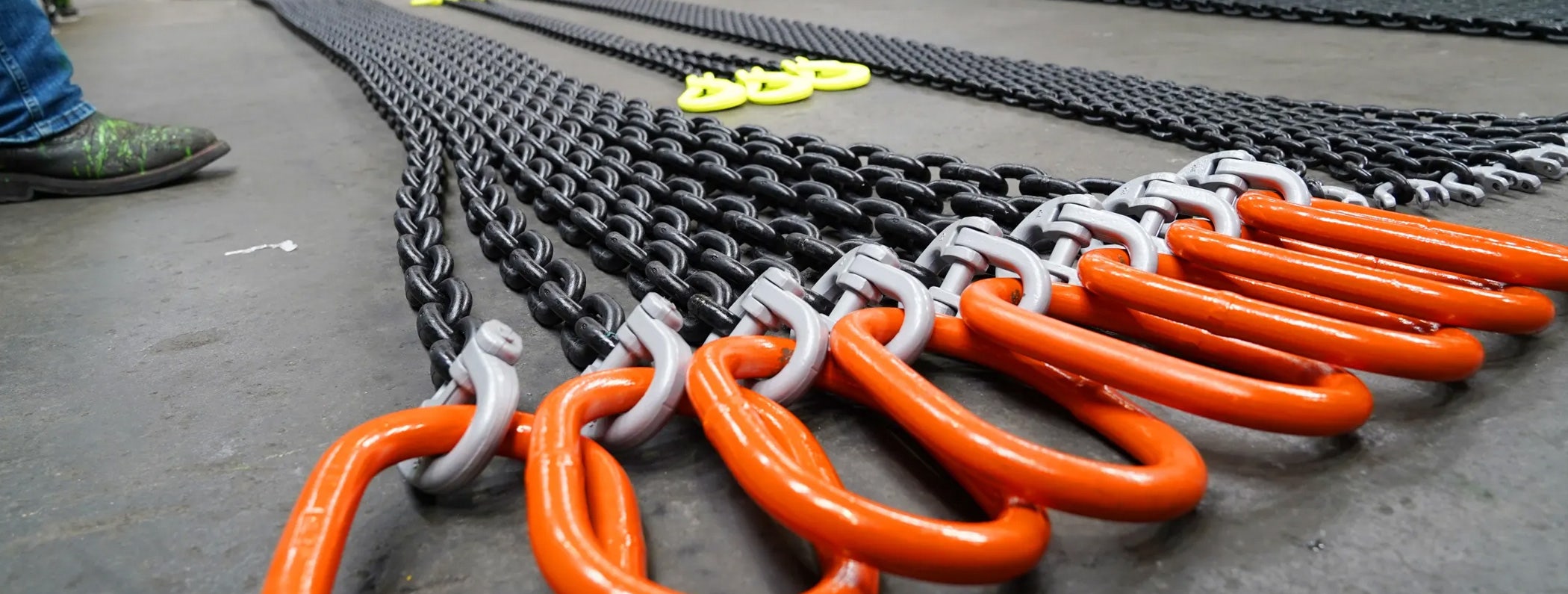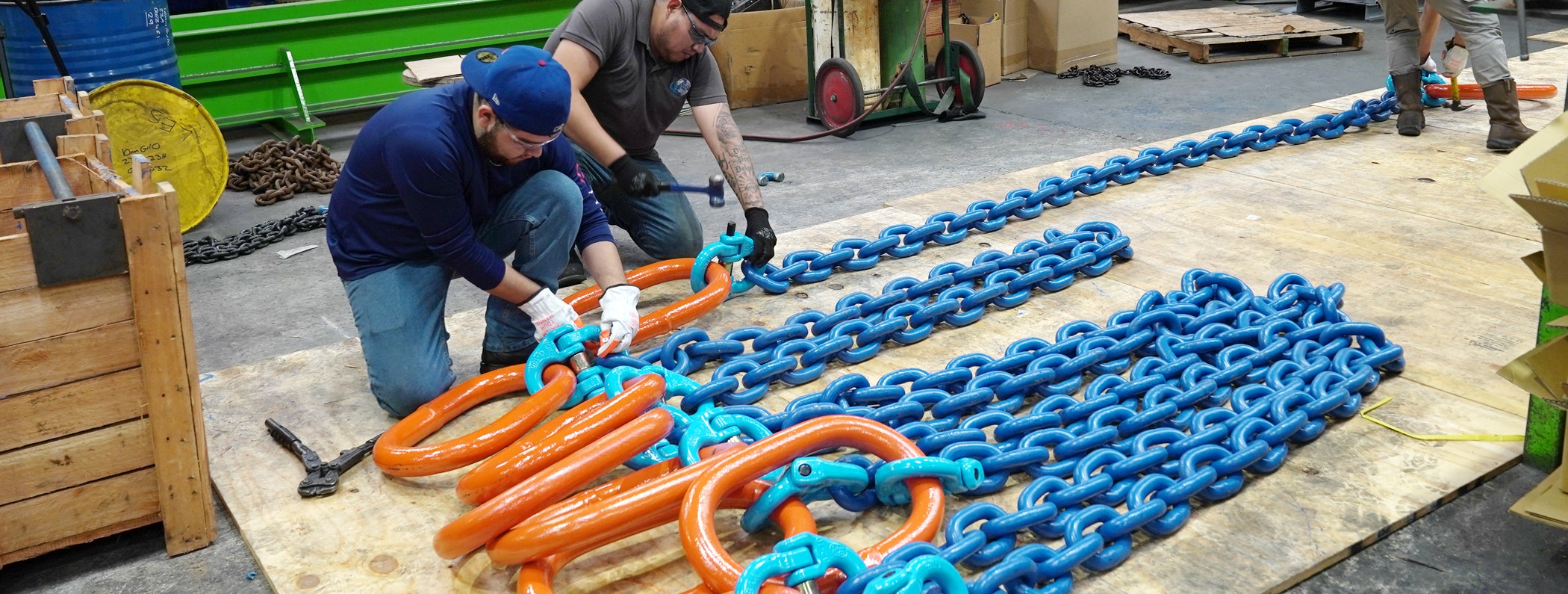What Are Below-the-hook Hardware Devices and Why They Matter

Over the last few years, the global material handling equipment manufacturing sector has witnessed a steady growth owing to the increasing demand. Fortunately, the trend is likely to continue in the coming years.
According to a recent study, global demand for material handling equipment is forecast to grow 3.9% per year through 2023 to reach $190 billion, faster than the pace of growth from 2013 to 2018. The growth is attributed to multiple trends, including increasing automation of the manufacturing, mining, and construction sectors.
One of the critical elements of most material handling systems is below-the-hook (BTH) devices. With these devices, you can easily enhance the efficiency of your cranes, enabling them to handle a wide range of loads.
Let’s see what below-the-hook devices are and why they matter.

1. What Is a Below-the-Hook Lifting Device?
A typical below-the-hook device is a mechanical device or tool that you can attach to cranes, hoists, or any other lifting equipment. It helps you to secure the loads safely when moving them.
A below-the-hook device can be anything, including magnets, hooks, ladle hooks, coil grabs, spreader beams, clamps, sheet and plate lifter, drum tilters, and lifting tongs, among others. The type, structure, and load capacity of these devices varies depending on the application. You can also find customized devices designed for very specific purposes.
A. Common Applications of Below-the-Hook Devices
Although you can get customized solutions, these devices are also used for a few common applications. These include:
- Lifting and moving pipes, metal bars, concrete blocks, and metal girders
- Stacking and retrieving metal coils and wire rope coils
- Stacking and retrieving metal sheets, plates, and similar items
- Lifting and moving pallets and drums
- Lifting and moving loose items like sand and grains using big bags and spreader beams
B. Common Elements of a Below-the-Hook Device
Although each below-the-hook device is different depending on the application, there are a few components that you can find everywhere.
- Lifting Lugs
Lifting lugs are projections in the plate or bar or any heavy component of a below-the-hook device. The number and location of lifting lugs vary. They usually have an opening or hole in the center. You can attach hooks, slings, and ropes through these openings to tie the load to the device.
- Bail
Bail is the point where the below-the-hook device connects with the crane hook or the hoist. Bails usually come in two styles, pin style and plate style. The number and location of bails will vary from device to device.
- Latch
It is a simple component that holds the lifter in an open or closed position. The primary purpose of the latch is to prevent the load from getting off suddenly to keep the equipment and workers safe. The most common example is using safety latches on the hooks.
- Gusset
A typical gusset is usually a metal plate attached to the device to provide it with added strength. It protects the area facing excessive stress or rough usage from breaking down under the weight.
2. Benefits of Using Below-the-Hook Devices
Each below-the-hook device is application-oriented. As a result, it comes with a specific set of advantages. However, the following are the most common ones:
A. Safety
Perhaps the biggest benefit of a below-the-hook device is safety. Although you can use wire rope slings, synthetic slings, and alloy metal chain slings to lift and move any load, they may not necessarily be the safest option out there.
These lifting devices may cause the load to shift suddenly while it is still in the air, resulting in a potentially disastrous accident. They may also cause irrecoverable damage to the goods. Both equipment and workers are at risk in these circumstances.

However, as a below-the-hook device is specifically designed to move and lift a load, it takes care of all safety concerns. Furthermore, you don’t have to spend time or money on coming up with an alternative that may or may not work.
B. Efficiency
The second advantage is that you can get customized below-the-hook devices. Most manufacturers do offer specialized solutions as per your material handling system requirements. So, it is easier to move your load safely and efficiently without wasting time, energy, and money. Plus, as the load is not damaged during the lift, its integrity remains intact.
However, as these devices are made for heavy lifting and moving applications, you need to follow the required safety guidelines.

3. Regulatory Compliance Is Key
When it comes to below-the-hook devices, the American Society of Mechanical Engineers (ASME) has set a few strict quality standards. The following are the two most critical standards that your device must comply with:
A. ASME B30.20
This ASME standard covers the provisions for marking, construction, installation, inspection, testing, maintenance, and operation of below-the-hook lifting devices. It covers the guidelines and standards not covered in any of the other B30 volumes.
It addresses the following five below-the-hook devices.
- Structural and Mechanical Lifting Devices
- Vacuum Lifting Devices
- Close Proximity Operated Lifting Magnets
- Remotely Operated Lifting Magnets
- Scrap and Material-Handling Grapples
B. ASME BTH-1
In this section, ASME provides the minimum structural and mechanical design and electrical component selection criteria required for the B30.20 below-the-hook lifting devices. It addresses only the design requirements. So, you need to use the standards mentioned in BTH-1 in combination with those provided in B30.20.
Furthermore, you need to use the BTH-1 and B30.20 in combination with other volumes of the ASME B30 series to comply with the regulations in your respective jurisdiction.
Parting Words
Below-the-hook devices are one of the most critical elements in material handling systems. They provide your workers and equipment with the required safety and efficiency. Hopefully, this post will offer you the much-needed insights about below-the-hook devices. Let us know if you have found this article useful in the comments section.
Shop Online Hardware















